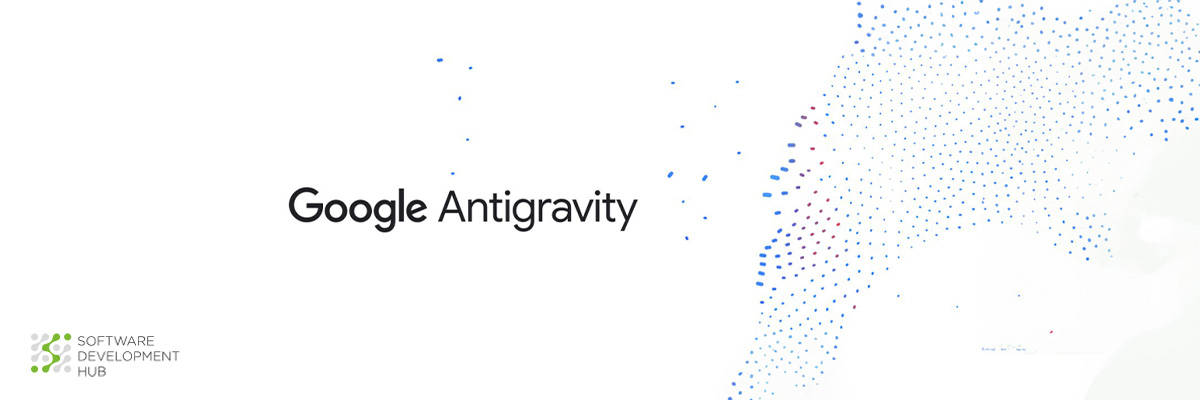What is Gap Analysis?
It may be difficult to stay on top of the most recent trends and industry best practices in the constantly changing business world. Gap analysis is an essential technique that helps keep businesses on the cutting edge. Gap analysis is a potent tool for assisting firms in determining the discrepancies between their present performance and intended goals or objectives. Businesses may get insightful knowledge about their operations, make wise decisions, and take action to address any gaps that might be impeding their performance by carrying out a thorough gap analysis. In this post, we'll go into the gap analysis realm, learning what it is, how it functions, and why it's crucial for any business hoping to succeed in the competitive business environment of today.
Gap analysis is a methodical procedure for locating and examining the discrepancies between the intended state and the present state of an organisation or a process. According to BABOK, “a gap analysis identifies the difference between current state and future state capabilities”.
So to find the gaps or disparities that exist, it entails comparing the existing performance levels to the anticipated or planned performance levels.
Several industries, including business, healthcare, and education, utilise gap analysis to find areas for improvement and create plans of action to bridge the gaps between the present situation and the ideal one. It is performed to assist companies in identifying their strong points and areas that need development. Organisations may create plans to close the gaps and enhance their overall performance by recognizing the inconsistencies or gaps.
Situations like these are examples of when gap analysis is beneficial:
- Gap analysis may be used to find inefficiencies and places where corporate operations, such supply chain management or customer service, might be improved.
- Gap analysis may be used to find areas that need improvement in patient safety and healthcare quality, such as prescription mistakes or hospital-acquired infections.
- Gap analysis is a tool that may be used to assess the efficacy of educational initiatives and pinpoint areas where student performance falls short of expectations.
- Gap analysis may be used to find weaknesses in environmental sustainability, such as those related to energy use or waste management.
Gap Analysis Categories
Depending on the subject being studied and the goal of the study, there are several categories of gap analyses.

Gap analysis categories
Performance gap analysis. This kind of gap analysis is used to determine the discrepancy between intended and actual performance levels in a company or organisation. Finding problem areas and development opportunities is beneficial. There are such subtypes of performance gap analysis:
- Improvement performance gap analysis. This type is used to pinpoint areas in which a company's or organisation's existing performance might be improved. It aids in highlighting performance gaps between current performance and best practices and offers recommendations for enhancing effectiveness, efficiency, and quality.
- Expansion performance gap analysis. This type of performance gap analysis is employed to pinpoint the differences between a company's present market position and its ideal position. It aids in locating potential growth and market expansion prospects and makes recommendations for strategies to boost revenue and market share.
- Diversification performance gap analysis. This kind of performance gap analysis is used to find the differences between a company's existing product or service offerings and what it ultimately wants to give customers. In order to better satisfy client requirements and preferences, it offers ways to extend product or service lines and assists in identifying chances for diversification.
Product/market gap analysis. This sort of gap analysis contrasts a company's present product offerings with the requirements and preferences of its target market. With the use of this analysis, the company is going to be able to pinpoint areas where its product offerings fall short of the demands of its target market and create plans to fill those gaps. There are such subtypes of product/market gap analysis:
- Product line gap. The gap between a company's product line and the demands and preferences of the target market is the main focus of this kind of gap analysis. Companies can then create new items or make modifications to current ones to close any gaps in their product offerings that could be significant to their customers.
- Distribution gap. This kind of gap analysis identifies the disconnect between a company's distribution methods and the target market's preferences. It aids businesses in determining if they need to widen or alter their distribution networks in order to better reach their customers.
- Usage gap. This kind of gap analysis examines the discrepancy between how consumers are now using a product and how they may be using it more efficiently. It aids businesses in determining how their product may be enhanced or changed to better suit the demands of their clients.
- Competitive gap. This kind of gap analysis contrasts a company's goods and services with those of its rivals. It assists businesses in identifying potential areas where their goods may fall short of those of the competition and in creating plans to fill these gaps and maintain market competitiveness.
Profit gap analysis. This particular kind of gap analysis looks at the discrepancy between a company's existing earnings and its desired profits. Profit gap analysis seeks to pinpoint the root causes of the discrepancy between existing and desired earnings and to devise solutions for bridging it. Low sales volumes, high manufacturing costs, problems with pricing, poor marketing tactics, and inefficient operations are just a few of the elements that might cause a profit gap. A company may create focused plans to address the issues by identifying the precise ones that are causing the profit disparity.
Manpower gap analysis. This sort of gap analysis looks at the disparity between a company's present workforce and its anticipated future workforce requirements. In order to establish solutions to rectify any gaps or shortcomings in the present workforce, manpower gap analysis seeks to identify them. A personnel gap may result from a variety of sources, including changes in company requirements, changes in technology, changes in demographics, changes in industry laws, and changes in the general state of the economy. Companies may create focused plans to remedy any gaps or shortcomings in the workforce by identifying these characteristics and assessing their influence on the present workforce.
These are just a few illustrations of the many gap analysis approaches. The area being studied and the analysis's goal will determine the precise kind of gap analysis that is performed.
Steps to Perform Gap Analysis
The following are the common steps involved in conducting a gap analysis.

Gap analysis steps
- Define the scope and objectives. Establish the goal and parameters of the gap analysis. What is the analysis's objective? What system, organisation, or process will be examined? What are the intended results or goals?
- Identify the current state. Gather and evaluate information about the process, system, or organisation's present condition. Interviewing stakeholders and analysing paperwork are a few possible steps in this process.
- Identify the desired state. Describe the process, system, or organisation's ideal or desirable condition. This should be based on industry standards or benchmarks as well as the analysis's aims and objectives.
- Identify the gaps. Do a comparison between the present situation and the ideal situation and look for any discrepancies. This might entail evaluating the information gathered in step 2 and contrasting it with the standards established in step 3.
- Analyse the gaps. Analyse the discrepancies between the present and intended states to ascertain the underlying reasons. This can entail figuring out what processes are inefficient, what resources are scarce, or what other elements are responsible for the gaps.
- Develop an action plan. Make a strategy to remedy the holes and enhance the organisation, system, or process. Prioritising suggestions, setting deadlines, and determining the resources required to carry out the plan may all be part of this process.
- Monitor and evaluate progress. Put the action plan into action and track your results over time. To obtain the intended results, assess the plan's success and make any necessary revisions.
Tools and Techniques for Gap Analysis
The following are some common tools and techniques for gap analysis:
- SWOT analysis. It stands for strengths, weaknesses, opportunities, and threats. It is a method for figuring out what elements, both internal and external, have an impact on how well an organisation performs. An organisation may assess where it is succeeding and where it needs to improve by analysing its strengths and shortcomings. A company can evaluate its external environment and determine possible areas for development or danger by identifying opportunities and threats.
- Benchmarking. Benchmarking is contrasting performance measures inside a company with industry norms or best practices. Through benchmarking, a company may determine where it is falling short of its competitors and create plans to catch up.
- Process mapping. Making a visual depiction of a process' inputs, outputs, and important phases is called process mapping. An organisation can locate locations with bottlenecks, duplications, or inefficiencies by mapping out its operations.
- Gap analysis matrix. It is a tool that aids in detecting differences between an organisation's ideal state and its existing condition. The matrix compares each process, function, or department's present status with its ideal state and reveals any gaps that should be filled.
- Fishbone diagram. An Ishikawa diagram, commonly referred to as a fishbone diagram, is a method for determining the main source of an issue or gap. It aids in determining the primary reason by graphically representing the potential causes.
- Surveys and interviews. Surveys and interviews can be used to get opinions on an organisation's performance from stakeholders, customers, or workers. An organisation can determine areas where it is functioning effectively and those where it needs to improve by soliciting feedback.
- Root cause analysis. It is a procedure that aids in determining the primary reasons for issues or performance gaps within an organisation. An organisation may create strategies to deal with the underlying issue and stop similar problems from happening in the future by determining the root cause of a problem.
Organisations may efficiently identify gaps and prioritise actions to reach the target state by using these tools and techniques.
Case: Healthcare Management System
Problem statement. The existing healthcare management system is failing to satisfy the demands of the medical personnel, which has a negative impact on patient care quality and efficiency.
The case of using the gap analysis is illustrated using the fishbone diagram.
Fishbone diagram categories are the following:
- People: Healthcare staff.
- Process: Healthcare system procedures.
- Technology: Healthcare management system.
- Environment: Healthcare facilities and resources.
A gap analysis was conducted and the following was found.
1. People.
a) Healthcare personnel lack enough training on the healthcare management system.
b) Inadequate personnel levels in several departments, which results in more work for current employees.
2. Process.
a) The healthcare management system is not consistently used across departments.
b) Ineffective workflow procedures cause delays in patient care.
3. Technology.
a) Healthcare staff needs are not being met by an outdated healthcare management system.
b) The healthcare management system doesn't have enough technical support.
4. Environment.
a) Resources available to support the healthcare management system are insufficient.
b) Lack of physical optimization to facilitate effective usage of a healthcare management system.

Fishbone diagram for healthcare management system
After the analysis, the following solutions were proposed.
1. People.
a) All healthcare personnel should receive thorough instruction on the healthcare management system.
b) Increase the number of employees in areas with heavy workloads.
2. Process.
a) Ensure that the healthcare management system is used consistently by all departments.
b) Improve patient care and decrease delays by implementing optimized workflow procedures.
3. Technology.
a) To better serve the demands of the healthcare workers, upgrade the healthcare management system.
b) Offer dedicated technical assistance for the healthcare management system.
4. Environment.
a) Resources available to assist the healthcare management system should be increased.
b) Physical facilities should be improved to facilitate effective usage of the healthcare management system.
Challenges and Limitations of Gap Analysis
Although gap analysis is a useful tool for businesses, there are certain difficulties and restrictions with it, such as:
- Subjectivity. Gap analysis is frequently subjective and sensitive to the prejudices and preconceptions of the analyst. As a result, the analyses' efficacy may be compromised by erroneous assessments of both the planned future state and the existing condition.
- Narrow scope. Gap analysis may only pay attention to the areas of interest that have been highlighted and ignore other general problems that may have an influence on the organisation's success. This could lead to a restricted view of the issue as a whole for the company.
- Data shortage. Gap analysis is strongly dependent on data and information, which may be few or lacking. This might make it challenging to evaluate the situation objectively and create a strategy to close the gaps.
- Time-consuming. Resource-intensive and time-consuming gap analysis is possible. It necessitates extensive data collection, analysis, and planning, which can be difficult for businesses with low funding.
- Opposition to change. Stakeholders who are averse to change or who disagree with the gaps that have been found or the suggested course of action to close them may oppose gap analysis. The improvements required to close the gaps may be challenging to put into practice as a result.
- Lack of responsibility. Because gap analysis does not offer a clear framework for accountability, it may be challenging to guarantee that the gaps are closed and the anticipated future state is realised.
However, gap analysis may be a helpful tool for companies overall, but it's crucial to acknowledge its limits and use it in conjunction with other strategic planning tools and techniques to make sure that the company has a full picture of its position.
SDH is a team of like-minded people with extensive experience in software development, web and mobile engineering, custom enterprise software development. We create meaningful products, adhering to the business goals of the client. Main areas of development: digital health, accounting, education.
Categories
About the author
Share
Need a project estimate?
Drop us a line, and we provide you with a qualified consultation.








